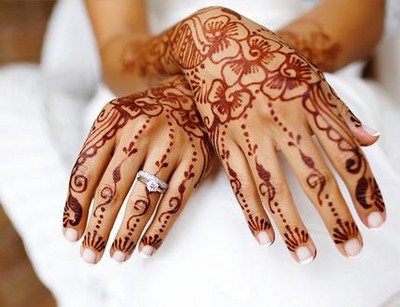From The Peopling of New York City
In India weddings are not seen as just a simple party that celebrates a marriage, but a union of two families and as a part of life. Marriage is seen as a necessity and the wedding that comes along with it is carefully planned and is quite different from the western tradition.
An Indian wedding is a massive and extravagant event that is stretched out to span several days and includes large number of guests and family members, some reaching well over a thousand. The way the marriage is set up varies from a customary arranged marriage to love-marriages, but traditionally the horoscope comes to account for much, as it is used not only as a method to find a compatible couple, but also as a tool to select the date for the wedding.
The wedding traditionally consists of three parts, the pre-wedding, the main day and the post-wedding, but the specific an complex traditions that are practiced within these parameters greatly vary according the area, the religion, language and caste. The pre-wedding ceremony of Mehendi is a common tradition that is practiced widely around the country. It is the gathering of the bride’s female friends and relatives in order to put henna on her feet and hands, it is a very social event as they come to discuss the bride’s future husband. The garland ceremony is another commonality, it is when the bride and groom garland each other as a sign of their acceptance of one another.
During the wedding day or the main day, a mandapa, or wedding alter is erected at the location of the wedding. The venues have changed from the home of the bride to more western hotels and banquet halls. It is around this altar that the wedding ceremony is centered, the different rituals that are then performed are entirely based in the region. In the North and East the tradition the groom dipping his ring in Sindhoor (vermillion powder), and tracing it from the bride’s hairline down to the crown of her head.
The Kanyadana is another crucial step, it translates to the giving of the virgin or daughter, and is when the bride’s father or guardian initially gives her to God and then takes her hand and places it in the groom’s, thus transferring the responsibility to him. The vows that are taken by both the bride and groom are essentially what make them husband and wife, unlike the simple “I Do,” the Indian tradition takes a much more meaningful and interactive path. The saptapadi ritual is a combination of vows and a symbolic representation of the journey that the pair will take through life. The take seven steps together, each representing an important promise or part of their lives, they are taken toward the North around the fire, which acts as their witness and are considered the most vital part of the ceremony. They seven steps are:
1 - to earn and provide a living for their family, and avoiding all things that might harm them.
2 - to build their physical, mental and spiritual powers and to lead a healthy lifestyle.
3 - to earn and increase their wealth by righteous and proper means.
4 - to acquire knowledge, happiness and harmony by mutual love, respect, understanding and faith.
5 - to have children for whom they will be responsible
6 - for self-control and longevity.
7 - to be true to each other, loyal and remain life-long companions by this wedlock.
